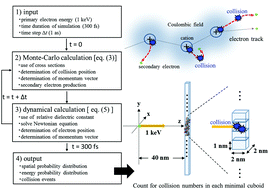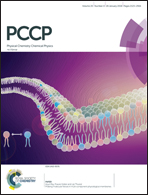A significant role of non-thermal equilibrated electrons in the formation of deleterious complex DNA damage
Abstract
Although most of the radiation damage to genomic DNA could be rendered harmless using repair enzymes in a living cell, a certain fraction of the damage is persistent resulting in serious genetic effects, such as mutation induction. In order to understand the mechanisms of the deleterious DNA damage formation in terms of its earliest physical stage at the radiation track end, dynamics of low energy electrons and their thermalization processes around DNA molecules were investigated using a dynamic Monte Carlo code. The primary incident (1 keV) electrons multiply collide within 1 nm (equivalent to three DNA-base-pairs, 3bp) and generate secondary electrons which show non-Gaussian and non-thermal equilibrium distributions within 300 fs. On the other hand, the secondary electrons are mainly distributed within approximately 10 nm from their parent cations although approximately 5% of the electrons are localized within 1 nm of the cations owing to the interaction of their Coulombic fields. The mean electron energy is 0.7 eV; however, more than 10% of the electrons fall into a much lower-energy region than 0.1 eV at 300 fs. These results indicate that pre-hydrated electrons are formed from the extremely decelerated electrons over a few nm from the cations. DNA damage sites comprising multiple nucleobase lesions or single strand breaks can therefore be formed by multiple collisions of these electrons within 3bp. This multiple damage site is hardly processed by base excision repair enzymes. However, pre-hydrated electrons can also be produced resulting in an additional base lesion (or a strand break) more than 3bp away from the multi-damage site. These damage sites may be finally converted into a double strand break (DSB) when base excision enzymes process the additional base lesions. This DSB includes another base lesion(s) at their termini, and may introduce miss-rejoining by DSB repair enzymes, and hence may result in biological effects such as mutation in surviving cells.



 Please wait while we load your content...
Please wait while we load your content...